Reog Ponorogo is one of Indonesia’s most iconic traditional performances, rooted deeply in the cultural heritage of East Java. Originating from Ponorogo, this art form combines dance, music, and mythical storytelling, creating a mesmerizing spectacle. Below, we explore the essence of Reog Ponorogo and its cultural significance through six key aspects.
Revealing the Mystique of Reog Ponorogo: East Java’s Iconic Performance
The Origins of Reog Ponorogo
Reog Ponorogo traces its history back to the Bantarangin Kingdom era. Legend says it was inspired by a tale of love and rivalry between King Kelana Sewandana and King Singabarong from Lodaya kingdom. This rivalry is symbolized through the dramatic performance featuring masks, music, and elaborate costumes. Over the centuries, Reog Ponorogo has evolved but remains a symbol of the region’s identity and resilience.
The Barong Mask, A Symbol of Power and Spirit
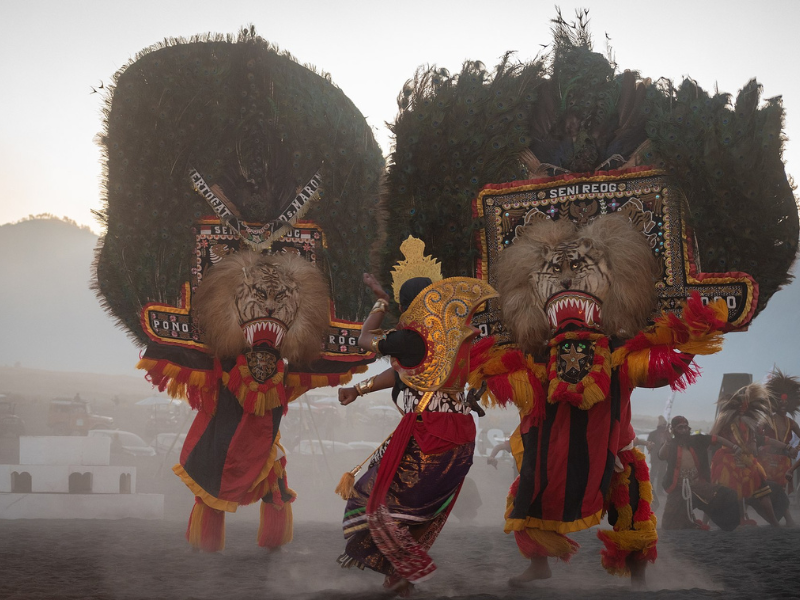
The most recognizable element of Reog Ponorogo is the massive Barong mask, also known as Singa Barong. This lion-like figure, adorned with intricate carvings and vibrant peacock feathers, symbolizes strength, courage, and leadership. Weighing up to 50 kilograms, the mask is worn by a single dancer who balances it using their jaw, a remarkable feat that showcases both physical strength and spiritual discipline. The Barong not only captures the audience’s attention but also serves as the centerpiece of the performance, embodying the essence of Reog’s power and mystique.
The Role of Music in the Performance
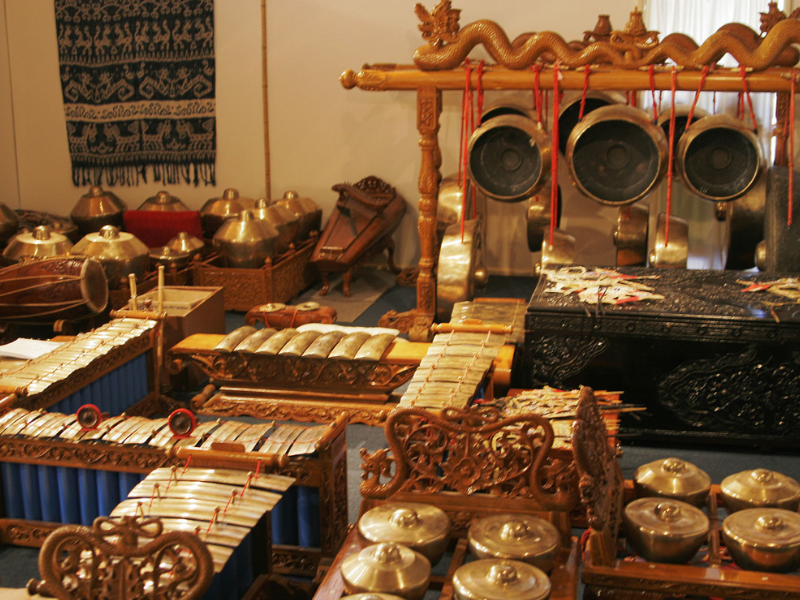
Traditional gamelan music plays a vital role in Reog Ponorogo, setting the rhythm and atmosphere for the performance. Instruments like gongs, kendang (drums), and kempul are used to create a powerful auditory experience. The music not only accompanies the dancers but also conveys the emotions and intensity of the narrative, pulling the audience into the story.
Dynamic Choreography and Storytelling
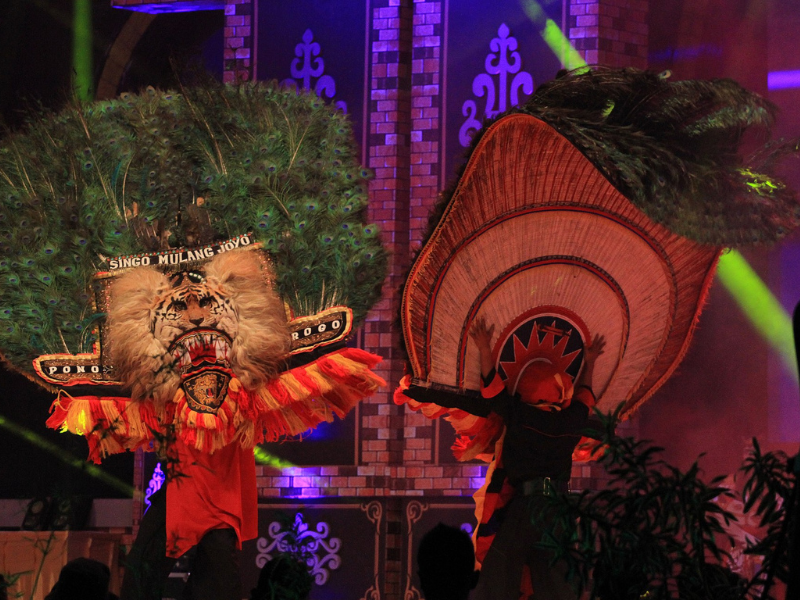
Reog Ponorogo is known for its dynamic and theatrical choreography. The dancers, often wearing elaborate costumes, portray characters from the legend with expressive movements and dramatic gestures. The lead dancer, who carries the heavy Barong mask, demonstrates exceptional physical strength and agility, performing acrobatic stunts that captivate the audience.
Ritual and Spiritual Significance
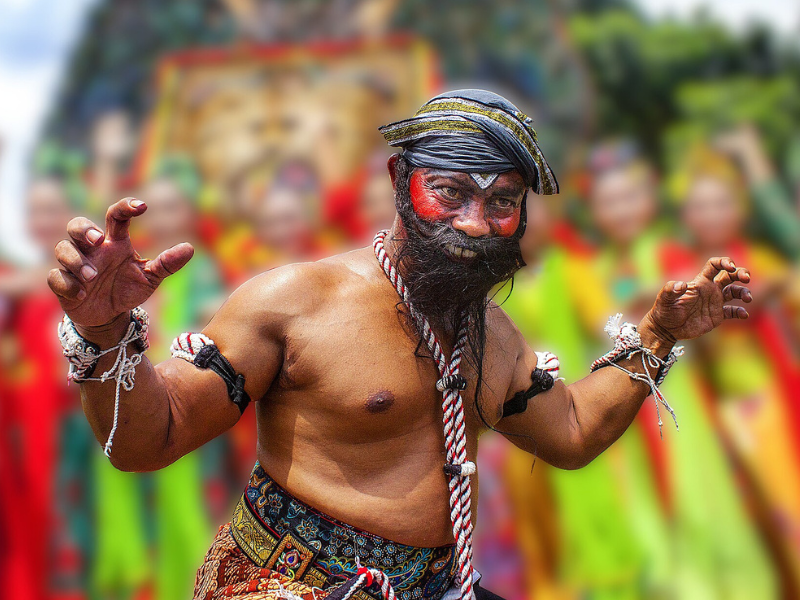
Reog Ponorogo is more than entertainment; it holds spiritual significance for the local community. Before a performance, rituals are performed to seek blessings and protection from ancestral spirits. The Warok figures, known for their mystical powers, represent spiritual guardians and are central to the performance. Their presence symbolizes a balance between the physical and the metaphysical, reminding the audience of the importance of harmony in life. The performers, particularly those who's handling the Barong mask, undergo rigorous spiritual preparation, including fasting and meditation, to enhance their strength and focus. These rituals emphasize the belief that Reog is a sacred art form that connects performers and audiences to their cultural roots and spiritual heritage.
Global Recognition and Preservation Efforts
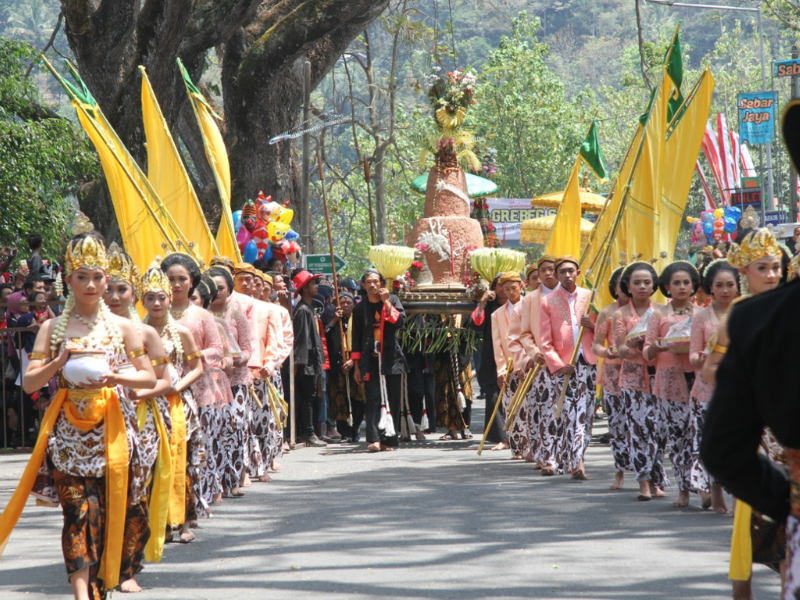
Despite its ancient origins, Reog Ponorogo continues to thrive in modern times. Festivals and competitions, such as the annual Reog National Festival in Ponorogo, celebrate the art form and encourage its preservation. One of the most prominent efforts to preserve and celebrate Reog Ponorogo is the Festival Nasional Reog Ponorogo (FNRP). Started in 1995, this annual festival is part of the larger Grebeg Suro celebration, a community event in Ponorogo that coincides with the Islamic month of Muharram. Additionally, Reog has gained international attention, often performed at cultural exhibitions abroad, showcasing East Java’s rich traditions to the world.



 Alicia Putri
Alicia Putri
 Jan 22, 2025
Jan 22, 2025